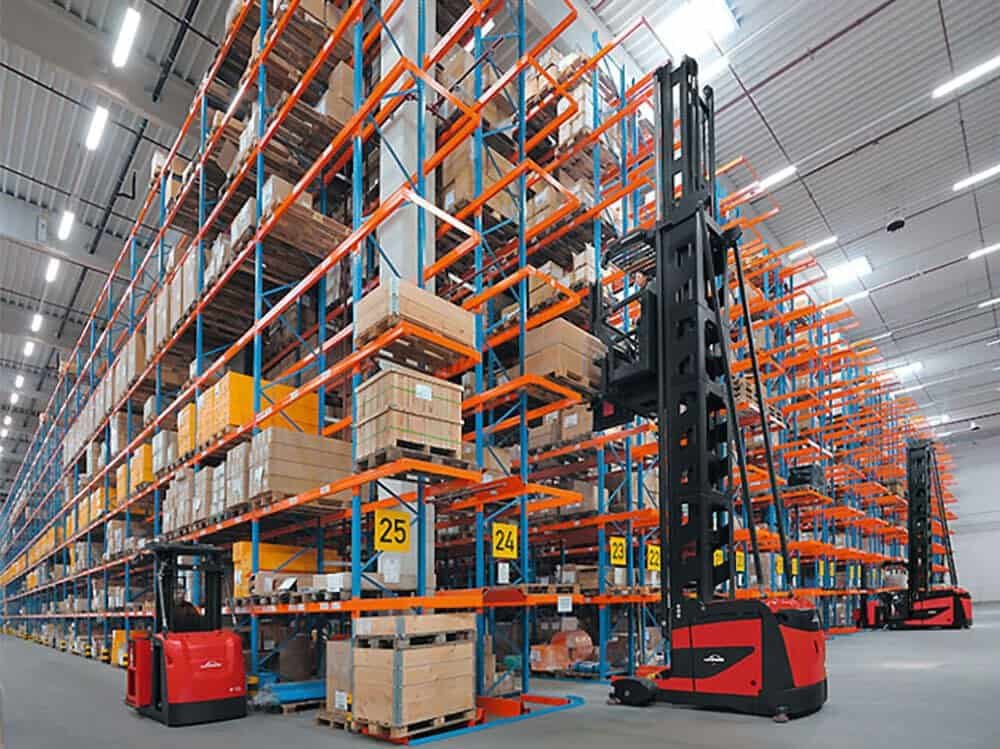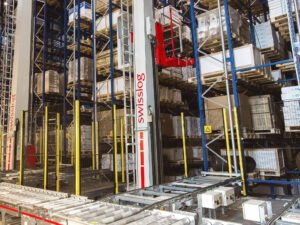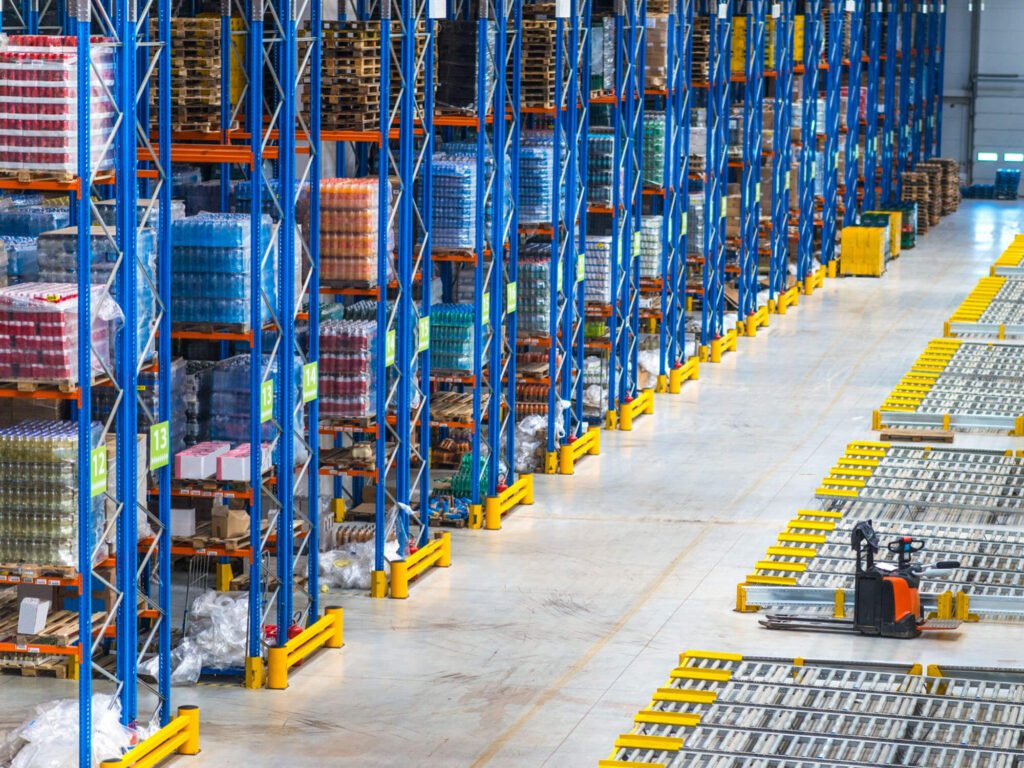High-piled storage allows you to store goods in a higher position, thereby maximizing your vertical space utilization. However, it entails more strict protocols, including fire safety regulations. That’s why high-piled storage is a critical topic that all warehouse managers should know about in order to prevent any potential mishaps.
This in-depth piece will introduce everything you need to know about high-piled storage, from what this system really is to how to obtain its permits, as well as how many high-piled storage types there are. You will also learn about probable fire risks and required safeguards when employing this inventory method.
What Exactly Is High-Piled Storage?
High-piled storage refers to an inventory method in which goods or materials are held in vertical stacks that exceed a height of 12 feet (over 3.5 meters). To better understand this concept, let’s talk about its pros and cons.
Benefits Of High-Piled Storage
By applying high-piled storage to your warehouse, you can achieve the following valuable advantages:
- Increasing storage capacity: This inventory method enables optimal utilization of vertical space, thus allowing firms to keep substantial amounts of goods without requiring extra physical area. As a result, storage capacity is enhanced.
- Enhancing goods accessibility: High-piled storage is not only space-saving, but also highly accessible. With the use of specialized equipment like forklifts or stacking cranes, items stored at higher levels can be easily accessed and retrieved when needed.
- Improving inventory organization: To stack goods vertically, this storage solution often incorporates racking or shelving units. Utilizing these structures can significantly improve organization and inventory management.
- Offering better protection: Products stored at higher levels are typically susceptible to damage from mishaps, accidents, or mishandling at ground level. That explains why high-piled storage offers better protection.
- Being cost-saving: By leveraging the warehouse’s vertical space, high-piled storage needs less overall building area, thereby reducing construction and operational expenses associated with larger facilities. It also boosts productivity, thus lowering labor costs.
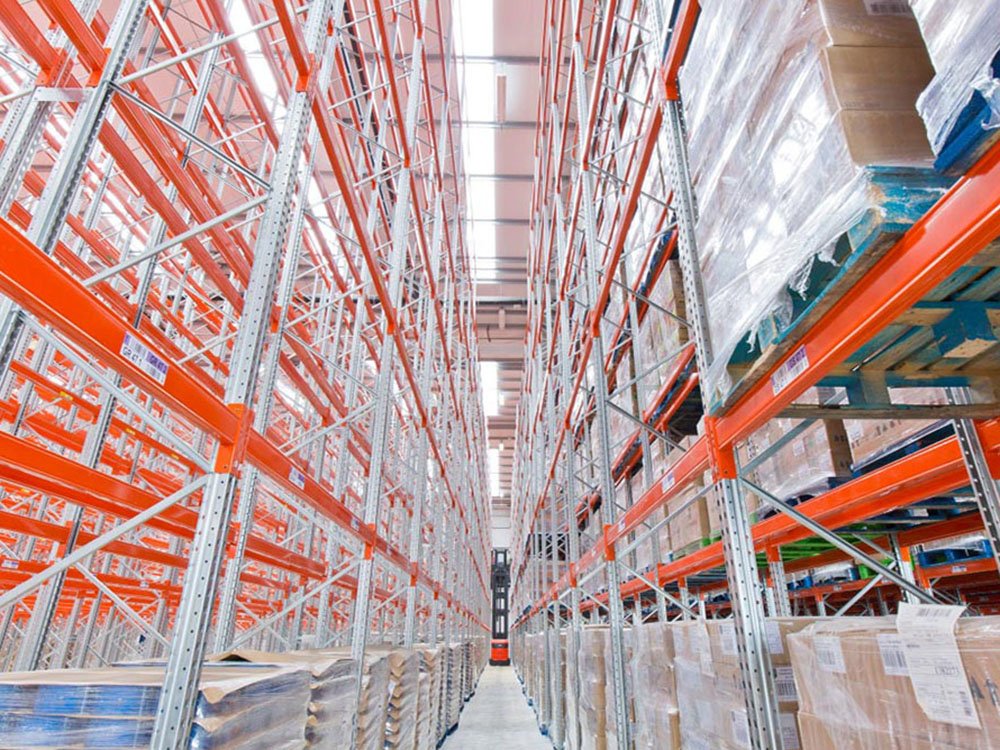
Drawbacks Of High-Piled Storage
Besides the great benefits mentioned above, high-piled storage also possesses certain drawbacks:
- Posing safety risks: Safety concerns, such as fire threats, may arise when high-piled storage is not managed in accordance with appropriate fire safety protocols and regulatory standards. Accidents and injuries can also occur as a result of falling items or unstable stacks.
- Requiring specialized equipment: As mentioned above, this inventory method needs specialized equipment like forklifts, cranes, or even automated retrieval systems to function optimally. This aspect can raise its cost substantially.
High-Piled Storage Of Combustible Items
High-piled storage poses certain safety risks, like unstable stacks or falling objects. That applies to normal items. Yet, if you’re storing combustible products, then extra safety requirements are required. Let’s discover what these criteria are in this section.
Defining Combustible Items
Essentially, any substance that has the potential to burn, even if just partly, is classified as combustible. This includes almost all commodities kept on wooden pallets. Exceptions would apply to objects made entirely of metal or other non-flammable materials, as long as they are not housed on pallets or shelves that may catch fire.
If you’re dealing with highly flammable items such as chemicals, wooden products, or tires, it’s important to be aware that you may be required to adhere to extra regulations in addition to obtaining a regular high-piled storage permit.
5 Commodity Classes Of Combustible Items
Additional rules for high-piled storage of combustible goods are often contingent upon a few factors, such as how large the inventory areas are and how products are arranged. But on top of that, there’s another important aspect: the commodity class.
Currently, there are five distinct classes, with Class I representing the lowest level of danger and Class V representing the highest hazard level. Let’s explore each of them below:
- Class I: Commodities in this class refer to non-combustible items that are stored on wooden pallets and packaged in corrugated paper wrappings or boxes. For example, non-flammable metal objects, dry pesticides, and fire-resistant food containers are all Class I items.
- Class II: If you wrap Class I products in flammable materials, you’ll have Class II commodities. This category encompasses food kept in highly combustible containers.
- Class III: Goods belonging to this category include paper, wood, standard charcoal, and natural fiber textiles. Plus, items such as bagged fertilizers, food, and non-flammable liquids kept in plastic containers are also Class III goods.
- Class IV: In addition to all products in the previous three classes, Class IV items include combustible solid metal goods, flammable oil-based paints, and level 2 aerosols housed in flammable containers. When storing these products, it’s essential to strictly comply with the applicable standards to avoid potential risks.
- Class V: While not legally classified as Class V items, plastics usually fall into this category. It is divided into three sub-groups based on its combustion emissions and ignition speed. Group A refers to plastic commonly used in toys and bottles, while Group B includes plastic tubes and polymers derived from nylon. Group C encompasses particular plastics like melamine and CPVC.
Depending on which category your stored items belong to, extra protocols for the high-piled storage are needed to provide sufficient protection and fire safety for the inventory facility and warehouse staff working inside.
High-Piled Storage Classification
To suit numerous materials and inventory requirements, high-piled storage is available in a variety of configurations. Below are the top five high-piled inventory methods that you can consider for your warehouse.
- Static high-piled storage: This is the most basic type, which involves stacking items vertically directly on the warehouse floor or on pallets. Despite being straightforward and cost-effective, this type is not appropriate for firms with small floor areas. Plus, it cannot keep products that need special handling.
- Rack-based high-piled storage: As the name suggests, this high-piled storage method employs a vertical racking structure to support the stacked items. It helps increase storage capacity and reduce the need for extra floor space all at once. This solution works well with items that have a consistent shape and size.
- Shelf-based high-piled storage: Unlike the rack-based type, this shelf-based high-piled storage utilizes adjustable shelving systems to hold up the piled materials, thereby providing adaptability in the height. This solution is suitable for businesses that need to store small or oddly-shaped objects.
- Mobile high-piled storage: This next inventory method houses products on mobile racking or shelving units, meaning structures that can be moved laterally to open up lanes for access. It is ideal for organizations that have limited floor areas or need quick access to inventory.
- Automated high-piled storage: Another high-piled inventory option is the automated type, which relies on robots, cranes, and conveyors to handle and stack products. Despite being costly to employ, this method can significantly improve your warehouse efficiency and staff productivity.
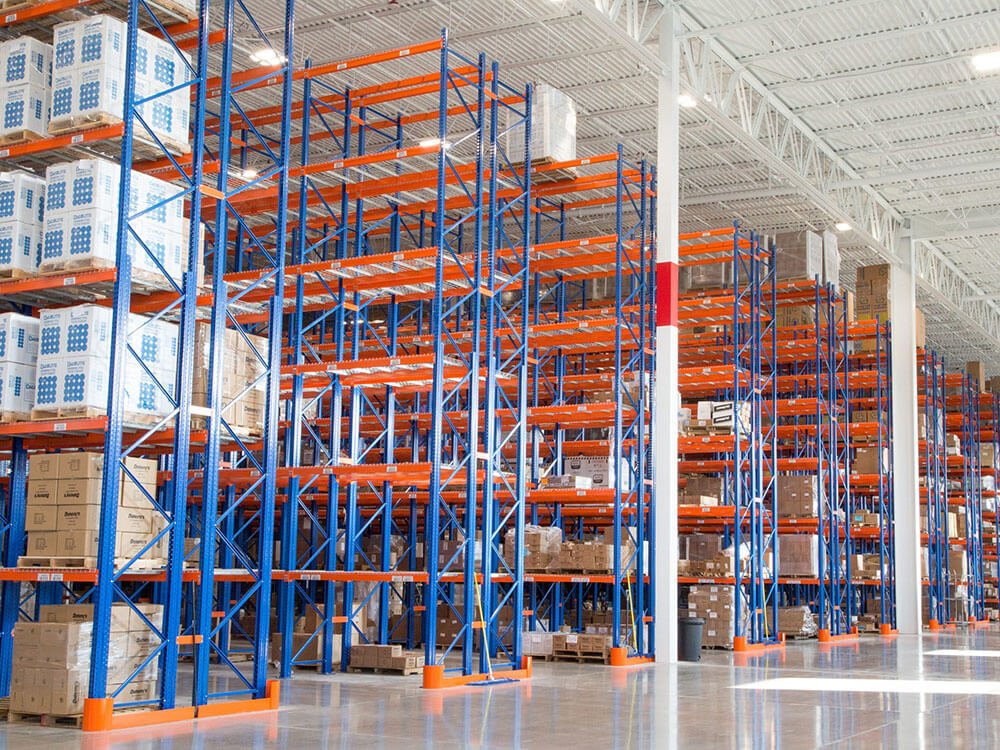
Potential Fire Risks Related To High-Piled Storage
Now that you know all the basics about high-piled storage, let’s dig deeper into certain potential fire dangers associated with this inventory method. The following are the seven most common causes of fire hazards:
#1: Electrical Issues
Electrical problems are undoubtedly the number-one cause of fires. These issues are often associated with wire melting or the presence of sparks triggered by defective conveyor belts, lights, or fans.
This cause has the potential to ignite flammable items on racks or pallets, causing extensive damage to inventory facilities. To limit this danger, you must maintain your equipment on a regular basis and employ suitable electrical safety precautions.
#2: Smoking
One of the primary safety measures for high-piled storage, especially with combustible products, is to prohibit or limit smoking inside the warehouse, as this activity poses a substantial fire risk.
Smoking materials like cigarettes may ignite combustible items or produce sparks that can start a fire. Thus, it’s important to take preventive precautions ahead of time to avoid smoking-related fires and to restrict this activity near the inventory areas.
#3: Arson
Arson is the intentional act of causing a fire to a property. Someone may be motivated to conduct such activities for vengeance or personal gain. In any case, it poses a significant concern for high-piled storage spots. The concern is greater if you’re storing combustible materials at those locations.
To mitigate this danger, consider employing security measures in your warehouse, such as surveillance cameras or access control systems. Another solution is to hire qualified security guards for your facility.
#4: Spontaneous Combustion
This situation can occur when specific materials contribute to the ignition without the need for an external heat source. These items may consist of paper or oily clothes that are capable of generating heat.
To prevent spontaneous combustion, ensure that materials are stored in an area with adequate ventilation, separate from other combustible substances.
#5: Poor Maintenance
Inadequate maintenance constitutes an additional significant fire hazard in high-piled storage areas. It can be caused by accumulated debris, dust, or other flammable materials.
Consequently, routinely inspect the sanitation of the area where you store high piles of products. Plus, consider removing those factors on a regular basis to eradicate the risk of fire, as they may provide fuel for fires in high-piled storage spots.
#6: Improper Storage
Incorrect handling of flammable goods can also trigger a fire. Some improper ways include keeping items too close to each other or putting unsuitable commodities next to one another.
These improper storage methods can lead to serious fire danger and, in some cases, even generate fires rapidly. Thus, make sure to compile a list of the correct techniques to handle items in high-piled storage. Some of the ways include utilizing adequate shelves or pallets, storing items in a safe and orderly way, and preventing overcrowding.
#7: Flammable Gases And Liquids
Last but not least, combustible liquids and gases can pose serious fire threats in high-piled storage. Thus, one must-do solution is to ensure those high-piled locations have adequate ventilation or containment methods.
Furthermore, ensure that you follow all of the regulations and protocols that govern high-piled storage. By housing items correctly, handling them with care, and complying with mandatory rules, you can effectively limit and prevent the danger arising from this cause.
Required Safeguards For High-Piled Storage
If you’ve made it this far into the article, it’s safe to say that you understand the various potential dangers of high-piled storage. Thus, to ensure top-notch safety, here are the four types of safeguards you can apply to your warehouse.
- Fire extinguishing systems: Typically, these systems offer automated sprinkler solutions, such as Early Suppression Fast Response (ESFR) sprinklers. Beam-type smoke or heat detection is often an integrated part of these fire extinguishing systems.
- Sprinkler systems: These are the most challenging protection issues to design. They are usually expensive, but they offer the best safeguard for your investment. Thanks to advanced developments in recent years, there are a wide array of sprinkler options with varying flow patterns that you can choose from.
- Facility access: Giving the fire brigade an access route and access doors to the facility is known as building accessibility. In cases where automatic smoke and heat vents are installed, the warehouse space is separated into areas of a maximum 10,000 square feet by curtain boards that reach 6 feet down from the ceiling.
- Hose valves and stations: One requirement for manual firefighting and clean-up tasks by the fire department is to have 1.25-inch hose valve connections and 100 feet of hose uniformly dispersed throughout the warehouse.
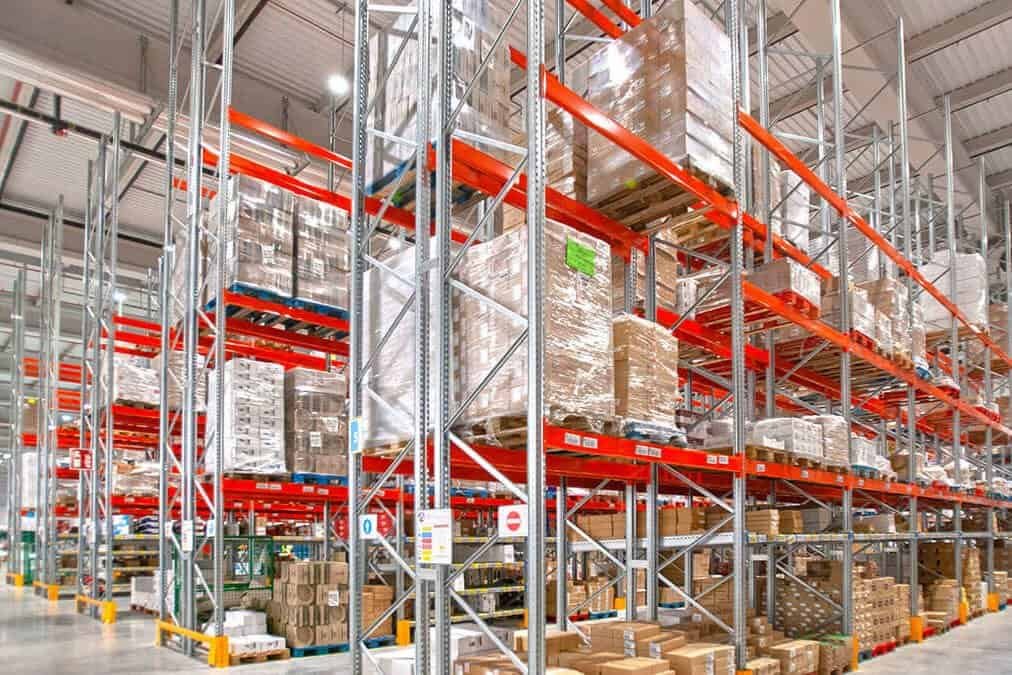
Obtaining High-Piled Storage Permits
Prior to employing high-piled storage for your items, especially combustible materials, it’s necessary to get a high-piled storage permit. If your inventory space exceeds 12 feet in height (or 6 feet in an area larger than 500 square feet), obtaining a permit becomes mandatory.
The purpose of these restrictions is to guarantee that your racks do not obstruct fire sprinklers or bring about extra hazards in the case of a fire. Usually, the fire marshal in your area is in charge of granting these permits.
To get the permit, you will be required to provide comprehensive details on your storage system, including scale drawings, dimensions, ceiling heights, existing fire suppression systems, and stored items’ characteristics.
Even after a permit is granted, your local fire department has the authority to do regular fire inspections of your inventory facility and demand necessary rectifications. In case you’re employing high-piled storage without a permit, your business is at risk of receiving expensive compliance notices and even being forced to close.
Quick Checklist To Pass The High-Piled Storage Safety Test
There are a lot of regulations surrounding high-piled storage safety. Therefore, it can be overwhelming to check whether your inventory system passes the test or not. Fortunately, if you know the four-question checklist below, you can get the result right away.
How long ago was your warehouse constructed?
The age of your inventory facility is an important consideration, since recently constructed buildings have higher chances of obtaining permits than old structures.
However, that doesn’t mean early buildings cannot pass permit applications. As long as these warehouses undergo enough upgrades to align with current codes and regulations, they are still able to overcome the safety test.
What is the current status of the sprinklers?
Another critical consideration is your sprinklers’ quality. Without these fire suppression gadgets, obtaining a permit for high-piled storage is highly unlikely, unless you only house non-combustible products.
So, it’s safe to say that equipping sprinklers for your warehouse is a must. But if an old facility has just installed new sprinklers, it’s easier to pass the safety test than a building with the original systems.
What is the flammability characteristic of your stored items?
Next, let’s address your stored products’ flammability. Regarding non-flammable materials, such as metal screws, high-piled storage of them is less likely to cause problems.
Nevertheless, products that easily cause a fire, like batteries or cotton fibers, will need further precautions.
What is the height of your high-piled storage?
The higher your items sit in the high-piled storage, the stricter the regulations that system must comply with. That’s why you should also consider the height of your high-piled solution.
Here’s a tip for you to get around this aspect. You can store non-flammable items at whichever height you desire, as long as your warehouse permits. However, for highly flammable products, let’s place them less than 6 feet high. Even ground storage is fine!
What If You Fail The Permit Application?
Failing the permit test for your high-piled storage is not the best feeling in the world. But trust me, it’s not the end of the world either. The purpose of the application procedure is not to restrict the number of organizations that utilize high-piled storage. Rather, it’s to ensure that those who actually employ it will do it securely.
In case you fail to obtain the permit on your first try, you’ll receive a list of standards that must be completed before the license is authorized. At that point, you can follow one of the two paths below:
- Path 1 – Making the changes: This normally entails hiring a fire sprinkler professional to upgrade your sprinklers and fire suppression systems. Depending on the size of your building, this phase can be cost-extensive and time-consuming.
- Path 2 – Removing the high-piled storage option: If you can manage to keep all your commodities below 12 feet (in some cases, 6 feet), then you can avoid this problem entirely. Sometimes, you are also required to reduce the storage areas. If you wish to go down this path, make sure to double-check with local authorities before making any alterations.
Conclusion
High-piled storage is a brilliant solution to maximize your inventory capacity vertically, especially for warehouses with limited floor space. However, it requires strict compliance with numerous protocols and regulations to ensure the safety of personnel and stored items therein.
It’s even trickier if you decide to store combustible products in high-piled storage. These materials pose greater fire risks to your inventory facility, thus demanding more stringent rules to be followed.
Hopefully, this article has offered you useful insights about high-piled storage, from how to obtain a permit to exploring different causes that can lead to fire hazards, together with the required safety measures to implement. Thanks for reading!

